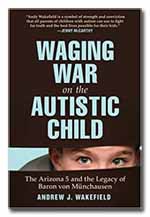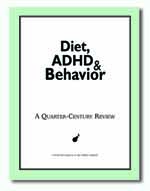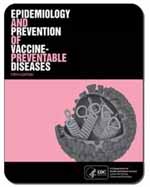Letter from Dr. Feingold to FAUS Members:
Greetings;

This past quarter has been quite eventful, not only for the concept of dietary management of behavioral disturbances and learning disabilities, but for the entire field of nutrition.
So many events of importance have occurred, it is difficult to give
Our program focusing upon food additives has received strong confirmation from two animal studies:
- (1) A study by Doctors Lafferman and Silbergeld of the National Institute of Neurological and Communicative Diseases and Stroke was reported in Science for July 27, 1979, and followed by an NIH press release. These investigators in studies on rats reported, “The inhibitory action of erythrosin B (FD&C Red #3) on dopamine uptake is consistent with the hypothesis that erythrosin B can act as a central excitatory agent able to induce hyperkinetic behavior.”
- (2) A study on rats by James Swanson of the Hospital for Sick Children in Toronto has demonstrated that FD&C Red #3 disrupts the uptake of all neurotransmitters of the brain. This report has been accepted by Science and should appear in an early issue of that journal.
Both studies are extremely important confirmatory evidence that food additives may cause behavioral disorders.
The complexities encountered in any study of my hypothesis were stressed as recently as August 13, 1979 by Acting Commissioner of the FDA, Sherwin Gardner, in his letter to Henry A. Waxman, Chairman, Subcommittee on Health and the Environment. I quote from a copy of the letter forwarded to me by Congressman Waxman:
The basic concept investigated in most of the clinical studies is that hyperkinetic children are so sensitive to synthetic colors and flavors that even minor infractions of the diet (resulting in exposure to low levels of these chemicals) could precipitate dramatic behavioral reactions. To prove or disprove this deceptively simple hypothesis has proven to be a more formidable and complex task than was anticipated. The complexity stems, in part, from the fact that Feingold’s proposed treatment of the hyperkinetic children (that is, his elimination diet) involves more than just the removal of the colors and flavors. These other rfactors, if not adequately controlled for, may actually interfere with the evaluation of the effects of the diet itself and, particularly with the assessment of the specific involvement of synthetic colors and flavors.
In the same letter, the Commissioner indicates his position regarding the broader implications of my hypothesis:
Nevertheless, SOMETHING IS HAPPENING TO THESE CHILDREN (emphasis added), and we believe it is our responsibility to continue to explore this matter. Perhaps more importantly, the widespread interest in Feingold’s hypothesis reflects an issue of public and scientific concern much broader than the problem of hyperkinesis — namely, the development and application of new concepts in toxicological assessment. The Bureau of Foods has attempted to become increasingly more active in fostering the development of these new concepts in toxicology involving, for example, behavior, immunological function, and genetic effects as components of safety considerations.
The FDA supported this position by sponsoring a science symposium, “Effects of Foods and Drugs on the Development and Function of the Nervous System: Methods for Predicting Toxicity,” held October 10-12 in Arlington, Virginia. The entire three-day program focused upon the biochemical and cellular aspects – a radical departure from traditional converences devoted almost exclusively to psychological and psychiatric observations at the clinical level.
It is gratifying to know that our program has played an important role in generating public and official awareness for hte importance of nutrition in a variety of neurological disorders.
With best wishes,
Sincerely,
Ben F. Feingold, MD
And a recent letter to FAWA f
The science symposium sponsored by the FDA was very successful, but unfortunately, the schedule was so full it permitted me no time to meet with you. I had hoped to have the opportunity to discuss with you the purposes and objectives of the Feingold Foundation for Child Development. Very succinctly, the purpose can be stated to be permanency.
Most parent associations throughout the country, actually throughout the world, have performed a great service by demonstrating the efficacy of the diet, which has led to supportive clinical and animal studies, as well as the recognition by the FDA. Yet in spite of these successes there are already evidence of weakness, as indicated by a constant change in leadership among our local groups. This will always continue, since it is inherent in all volunteer programs, and particularly one as widespread and varied as ours.
In order to provide the necessary permanency for our program, Mrs. Feingold and I have established the Feingold Foundation for Child Development, a non-profit, tax-exempt corporation. We have assigned all the royalties from the cookbook to the Foundation. The first major payment should be received by the end of January 1980. In addition, we are already receiving small contributions from a few individuals, both within and
I am hoping that the funds received by the Foundation will establish an endowment. The income from this endowment will be used to promote our program at both the national and local levels.
Note: Dr. Feingold passed away in 1982, and except for some minor early donations, the majority of Foundation income from his books was distributed elsewhere.




















